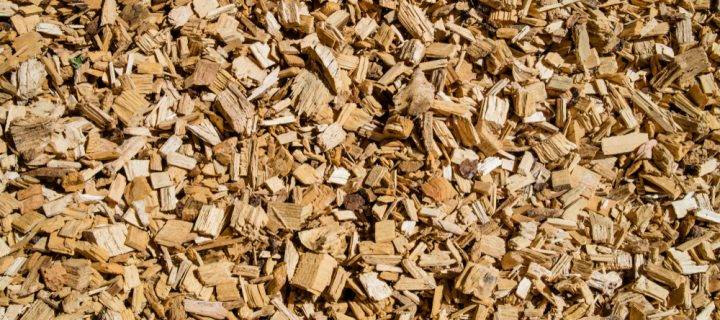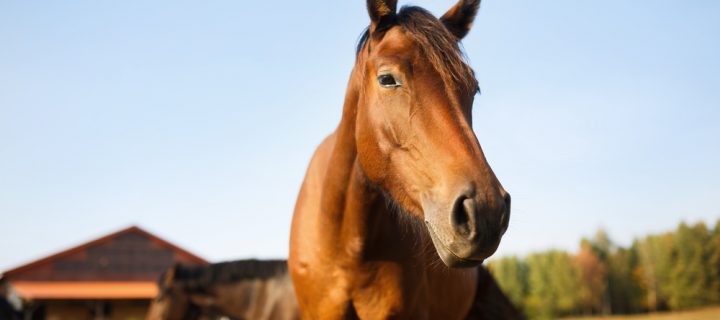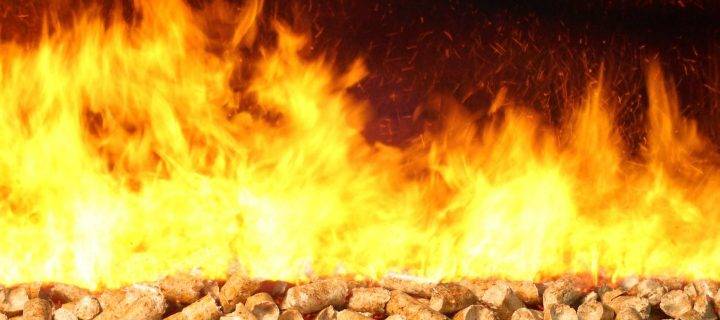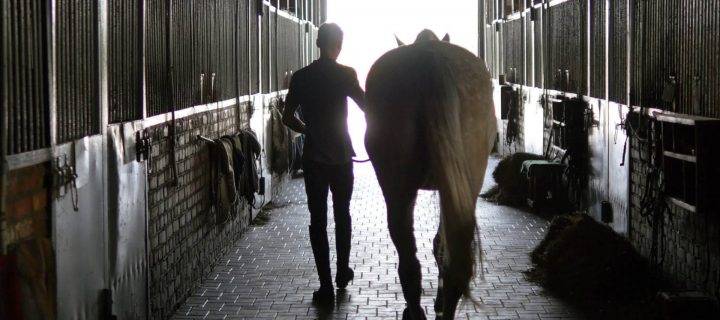We are now nearly three-quarters of the way through the year, meaning the weather will soon be changing and temperatures dropping. This makes our heating more important than ever, and one of the eco-friendly ways to heat your home is using biomass fuel boilers. PH Winterton is one of the most experienced suppliers of biomass wood pellets for customers across the country. We are proud to be part of the authorised Biomass Suppliers List, plus continuing to supply the best animal bedding. For this blog, we will explore biomass as a heating resource in greater detail. Biomass fuel – Sustainable and renewable heating source Our products are high quality, but that does not mean we need to fell forests in order to produce. PH Winterton acquires our wood pellets using our sawmill waste collection service to create this unique fuel source. We work with sawmills nationwide to repurpose their high-quality wood shavings and chips into wood pellets, meaning you receive a top-quality product but without any harm to the environment. The most compelling principle of biomass is that it is renewable plus its remarkable consistency and burn efficiency of pellet fuel produces a fraction of the particulate emissions of raw biomass. Pellet burners feature the lowest particulate matter emissions of all solid fuels burners. Biomass is virtually limitless and has proven to be price stable when compared to fossil fuels. Pellet manufacturers such as PH Winterton take by-products such as wood waste and refine them into pencil-sized pellets that are uniform in size, shape, moisture density and energy content. Because moisture levels are lower than in raw biomass, this means wood pellets can be handled easier in freezing situations. Also, the density of pellet fuel is substantially higher than raw biomass which means it can be transported and stored more widely. This can be in rail cars or delivered in truck containers. Get in touch for more information If you have any questions about biomass fuel, please do not hesitate to contact PH Winterton today. Our team of specialists will be more than happy to...
Read Moreabout Time to switch to biomass fuel as winter approachesMany horses find hot weather uncomfortable, but with the help of PH Winterton, we can keep them cool and reduce the risk of dehydration and colic. We are the leading provider of equine bedding and constantly talk to our customers, offering advice about caring for their horses all year round. Hydration is vital A constant supply of clean and fresh water is essential to prevent dehydration. The average horse drinks up to 50 litres of water each day in hot weather. Remember that buckets of water in the stable cab get warm and unpalatable if it’s left too long, so you may need to change it regularly. Water also has a key role in your horse’s digestive system, and if they do not get sufficient water it can increase the risk of colic. Water is continually secreted into and reabsorbed from the gut during the digestive process. Changes in hydration will affect this process and how food passes along the gut, increasing the risk of issues such as impaction colic. If the drinking supply is from a silty natural water source this could also lead to sand colic. How to increase water intake We would recommend having more than one water source available in the field to ensure certain herd members are not prevented or chased away from drinking by others. Keeping water sources away from a corner helps to prevent a horse from being corned into a small area by other horses. You can also soak or steam your horse’s hay to increase their water intake. Steaming hay for 90 minutes increases water content by up to three times, just remember to introduce soaked/steamed hay into their diet gradually to reduce the risk of colic. Feed the hay as soon as possible after soaking/steaming and dispose of any left behind. Remember to avoid soaking hay in direct sunlight and for long periods during warm weather as this encourages bacteria growth. Our current recommendation is to soak hay for around an hour in warm weather. Travelling advice If possible, avoid travelling your horse in hot weather and try to travel as early or late as possible to avoid the hottest part of the day and make sure you take...
Read Moreabout Summer care for your horsesIn summer it can be difficult to distinguish between regular fatigue and sweatiness from dangerous heat stress in horses. PH Winterton will tell you what to look out for and how best to safeguard your horse’s well-being for this blog. Every summer we are reminded that sunny weather can be difficult for horses, with them having to expend considerable energy to keep cool as temperatures rise. This doesn’t mean you can’t enjoy your favourite equestrian activities on warmer days. You will need to take precautions and be vigilant for tell-tale signs of heat stress. Extra care is also required when transporting horses that are kept in dry lots or paddocks with little shade. Heat stress for horses ranges from poor performance to potentially fatal heatstroke. The progression through the stages of heat stress can be swift, so you will need to recognise them and intervene when spotted. Stage 1 – Dehydration Anytime a horse sweats they lose fluids, first from his bloodstream, then from his gut and the spaces between cells. If he continues to perspire, fluid will be eventually drawn from within the cells. If the horse becomes moderately hydrated, it will need access to water to help recover. In some instances, overexertion, illness or severe dehydration will prevent a horse from taking insufficient water to compensate for fluid losses. Two simple tests can be used to identify dehydration – The skin-pinch test can be carried out by grasping a fold of skin at the shoulder point and releasing it. If the horse is well hydrated, the skin will snap back into place in less than a second, whereas the longer it takes for the skin to flatten will reveal a greater level of dehydration. However, skin elasticity varies among horses, so it is best to learn what is normal for your resting horse and fully hydrated. For the capillary refill test, press gently on the horse’s gum just above an upper incisor and take note of how long it takes for the pink colour to return to the blanched spot. Two seconds or less is normal, whereas longer times indicate dehydration. Other telltale signs of dehydration include – Dark urine A body temperature elevated by a degree...
Read Moreabout How to reduce heat stress in horsesIt is vital for the long-term generation that biomass fuel pellets are sourced from responsibly managed forests and other industries (such as sawmills) that protect the environment and don’t contribute to deforestation. Sustainable wood pellets are considered carbon-neutral at the point of combustion. When biomass pellets are combusted, the same amount of atmospheric CO2 is released. The overall amount of CO2 in the atmosphere will remain neutral, unlike fossil fuels which release ancient carbon that has fallen out of the natural carbon cycle a long time ago. Sustainable bioenergy is a low carbon, lifecycle emissions including supply chain CO2 are included, and could possibly turn it into a source of negative emissions, with the addition of carbon capture technology. How is biomass fuel used? As a heating resource biomass fuel is typically used for heating small groups of houses, large individual houses, schools, or glasshouses where heat is not readily available. Biomass boilers have different tolerances of wet fuel, with most running on wood pellets with a moisture content above 30%. Biomass combustion takes place in four stages which can happen simultaneously – The facts about biomass pellets Biomass pellets (such as ones provided by PH Winterton) produce 80% less CO2 emissions when combusted than coal, plus lower levels of sulfur, chlorine, nitrogen. Wood pellets have an energy density of 11 gigajoules/m3, compared to 3 gigajoules/m3 from fresh wood or wood chips, according to data from the International Renewable Energy Agency Global wood pellet consumption for heating, plus power, reached 35 million tonnes in 2018 (excluding China) When used in high-efficiency wood pellet stoves and boilers, biomass pellets offer a combustion efficiency of up to 85% Get in touch with any questions If you have any questions about biomass fuel wood pellets, please do not hesitate to contact P.H Winterton today. We offer both P16 and P35 biomass wood pellets for customers all over the...
Read Moreabout Are biomass fuel wood pellets renewable?If you’ve never used biomass fuel wood pellets before you may wonder what they can be used for? Through our sawmill waste collection service, P.H Winterton and Son are able to transform this wood into pellets that can be used to fuel biomass boilers; a renewable energy source. For this blog, we will cover the most commonly asked questions about wood pellets and give you the answers you need. How are wood pellets made? Biomass pellets are made from either wood residue (sawdust, shavings, and offcuts, which are all by-products of wood processing), or from freshly cut timber especially felled for the production of wood pellets. Extremely high temperatures are used to dry the material and it is then compacted using a pelletizer. The naturally occurring organic binders in the wood are being utilised in the process, meaning that no artificial additives are needed. The final product is a uniform pellet, usually 6mm in diameter for use in domestic situations. This size makes this biomass fuel easy to transport, handle, and store. Usually, the moisture content of wood pellets is less than 8%. All wood that is used for producing biomass pellets is untreated and sustainably grown. What are wood pellets used for? Wood pellets are a sustainable alternative to charcoal, firewood, oil, and gas in heating, cooking, boiler, and power plants. Another alternative for these wood pellets is animal bedding such as in horse stalls. Biomass Fuel Wood Pellets from P.H Winterton Wood pellets are a clean-burning and sustainable form of energy with the lowest ash residue of any wood fuel. If you are considering investing in biomass, get in touch with P.H Winterton now to enquire about our wood pellets. Our team of experts would be more than happy to answer any questions you may have too. Our animal bedding products can also be used for chicken coops and cow...
Read Moreabout What are biomass fuel wood pellets and what are they used for?In a nutshell, yes, shavings can be used to create high-quality horse bedding. Through P.H Winterton’s sawmill waste collection we gather surplus wood from sawmills all around the country and create both equine bedding and wood chip pellets that can be used for biomass fuel boilers. For this blog, we will focus on why shavings are one of the best materials you can use to keep your horses comfortable. What are the criteria for good horse bedding? There are a number of criteria for what makes good bedding for horses, such as – Is it safe for horses? – Our sawdust bedding is extremely safe for horses Is it available in plentiful supply? – We supply different bales of bedding, with up to 48 packs able to fit onto a wooden pallet Is it absorbent? – P.H Winterton boasts three different types of equine bedding, all with excellent absorbency qualities How easy is it to store? – We give you the freedom of how much you purchase in one go, making it easy to store small or larger quantities at a time Is it cost-effective? – Our economy bale equine bedding is perfect for horse owners who are working on a budget but still need the best bedding Many horse owners think they need to bed their stalls as they would their own bed – soft and fluffy. But horses by nature do not need a soft, fluffy bed unless there are particular concerns which could include older horses needing to lie down frequently or stay down for longer periods of time. The main purpose of bedding is to absorb urine and moisture. Why should I choose shavings? Nothing quite looks and smells like a fresh stall of shavings. Our bedding keeps your animal and healthy, which is proven to help you to maintain a high standard production in the long run. Contact us for more information If you have any questions about shavings from P.H Winterton, please do not hesitate to get in touch...
Read Moreabout Can shavings be used for horse bedding?




